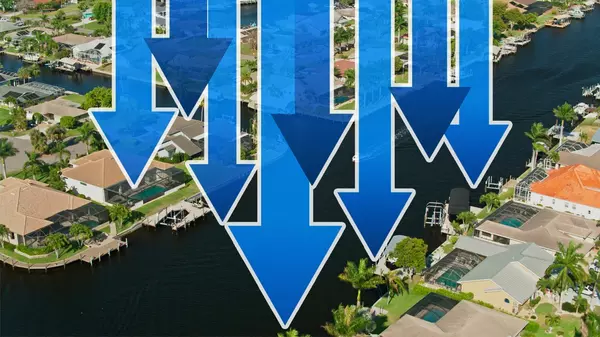Hurricane Melissa Trackers See ‘Dangerous’ Storm Make Landfall in Cuba After Devastating Jamaica: Should U.S. Homeowners Worry Next?

Hurricane Melissa made landfall in Cuba Wednesday morning as an "extremely dangerous" Category 3 hurricane, the National Hurricane Center in Miami said.
This after the storm strengthened to a Category 5 hurricane early Monday morning and made landfall in Jamaica Tuesday. As the strongest hurricane in the island's history, Prime Minister Andrew Holness declared the country a disaster area, with St. Elizabeth Parish reportedly "underwater" and at least seven storm-related deaths reported, according to NBC News.
"There is a lot of flooding around the city," storm chaser Bryce Shelton told AccuWeather on Tuesday evening while in Mandeville, Jamaica. "There are homes that are submerged, there are cars submerged. It is basically impossible to get out of the city."
According to Accuweather meteorologists, as Melissa began tracking northward on Saturday, it crossed over “some of the warmest waters in all of the Western Atlantic, which helped to fuel further intensification of the storm," resulting in Melissa becoming the strongest hurricane on record to make landfall in the Atlantic, tied with the 1935 Labor Day Hurricane for both wind speed (185 mph) and pressure (892 mb).
As Melissa now makes landfall in Cuba, early images show heavy rain and flooding in the streets.
As of now, it remains unclear what the impact of the storm will be on the U.S., though yet again it seems unlikely that it will make landfall.
“The timing and strength of a dip in the jet stream over the eastern United States this week will help determine the path that Melissa takes through the northern Caribbean and into the southwestern Atlantic," AccuWeather Lead Hurricane Expert Alex DaSilva says. "At this time, the odds of 'direct' rain and wind impacts from Melissa reaching the U.S. East Coast are low."
At present, there is a non-tropical storm over the United States, and combining that with Melissa offshore will likely create a period of drenching rain, gusty winds, and rough seas from the Carolinas to Maine that could make Halloween a washout.
Recap of the hurricane season so far
The 2025 Atlantic hurricane season has been active, with 13 storms reaching high enough intensity to be named, with five becoming hurricanes, including Melissa. Melissa intensified into a Category 5 hurricane on Monday, becoming the third storm of the year to be classified at the top of the Saffir-Simpson Hurricane Wind Scale, joining Erin and Humberto
Hurricane Erin was the strongest before now, as it managed to reach Category 5 status and cause intense coastal flooding from the Carolinas to New Jersey. It was followed by Hurricane Gabrielle in mid-September, which reached Category 4 intensity before shifting out to sea. Both Hurricanes Humberto and Imelda reached Category 2 status in late September, before doing the same.
Thankfully, landfall impact in the U.S has been minimal, with storm activity remaining largely over the open Atlantic, passing well offshore of major land areas.

The 2025 hurricane season was predicted to be 'above normal'
The NOAA reaffirmed in its updated outlook that the 2025 Atlantic hurricane season remains “above normal,” maintaining a 50% chance of higher-than-typical activity, down slightly from May’s 60% estimate.
The forecast called for 13–18 named storms with winds of at least 39 mph, of which five to nine could strengthen into hurricanes, and two to five may reach major hurricane status with winds topping 111 mph. As of now, we're well within their predictions.
“As we witnessed last year with significant inland flooding from hurricanes Helene and Debby, the impacts of hurricanes can reach far beyond coastal communities,” said acting NOAA administrator Laura Grimm in a NOAA report earlier this year.
A hurricane risk analysis by Cotality estimated that 33.1 million residential properties—valued at $11.7 trillion in reconstruction cost—face moderate or greater risk of hurricane-force wind damage. Florida, Texas, North Carolina, New Jersey, New York, and Massachusetts top the list of states most vulnerable to these conditions.

How to prepare for a hurricane before it makes landfall
The best defense against a hurricane is preparation well before landfall.
“Ideally, you'd get hurricane-ready in the months leading up to the start of hurricane season on June 1st,” says Rachael Gauthier, meteorologist at the Insurance Institute for Business & Home Safety in Charlotte, NC. Stockpiling water, nonperishable foods, and a go-bag of vital documents, cash, and medications ensures readiness when forecasts intensify.
When storms approach, insurance companies often enact “binding restrictions,” temporarily freezing new policies or coverage increases. This makes securing hurricane coverage in advance essential.
“An emergency savings buffer is vital to being ready to cover unexpected costs,” advises Melanie Musson, insurance expert at Clearsurance.com. Homeowners should also create an evacuation plan and establish clear meeting points.
As a storm draws near, securing property becomes critical.
“A few days before incoming storms, it’s a good idea to board up windows, bring in outside items that could become flying projectiles in high winds, and stock up on extra fuel for generators and/or vehicles,” Gauthier adds.
Categories
Recent Posts









"My job is to find and attract mastery-based agents to the office, protect the culture, and make sure everyone is happy! "
